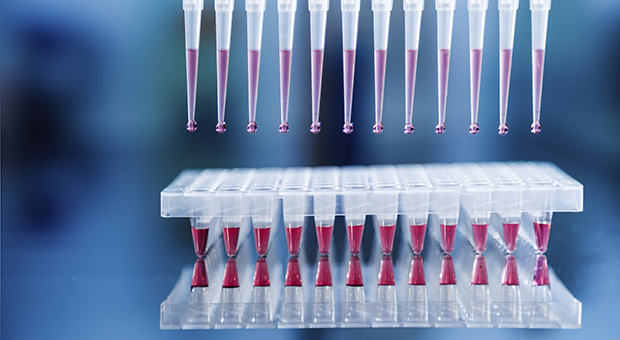Medical Center and College of Medicine research growth continues in fiscal year 2015

An 18 percent increase in research funding and a prestigious National Institutes of Health Pioneer Award highlight the fiscal year 2015 research mission accomplishments at Penn State Milton S. Hershey Medical Center and Penn State College of Medicine.
Later today at the Medical Center's public board of directors meeting, Dr. A. Craig Hillemeier, dean of Penn State College of Medicine, chief executive officer of Penn State Hershey Medical Center and Health System, and Penn State's senior vice president for health affairs, will report that Medical Center and College of Medicine faculty earned $98.3 million in external research support in 2014-2015, an 18 percent gain over last year's research funding total. This includes $67.8 million from the National Institutes of Health (NIH), a 25 percent increase over last year. This funding includes:
- $4.15 million to Dr. Steven Schiff through a prestigious Pioneer Award from the National Institutes of Health, the first Pioneer Award for Penn State. The Pioneer Award supports individual scientists of exceptional creativity who propose pioneering – and possibly transforming – approaches to major challenges in biomedical and behavioral research. Schiff, a neurosurgeon, will study the causes of sepsis infection in newborns in sub-Saharan Africa.
- $14 million to Dr. Chris Sciamanna from the Patient-Centered Outcomes Research Institute to study the effectiveness of a strength training program for older adults who have had a fall-related fracture. The program is based on Band Together, a program Sciamanna started locally through help from patient and family donations to the hospital's National Doctor's Day recognition program.
Other research highlights from fiscal year 2014, include:
- The appointment of Dr. Leslie Parent as vice dean for research and graduate studies. Parent has been with Penn State Hershey for the last 24 years and was previously the chief of the Division of Infectious Diseases.
- The development of a nanoparticle to deliver melanoma drugs directly to cancer cells. Dr. Gavin Robertson, director of Penn State Hershey Melanoma Center, published his work in the journal Molecular Cancer Therapeutics. Nanolipolee-007 contains a natural substance from tree bark called Leelamine and is a first of a new class of possible drugs for the treatment of melanoma. More research required by the Food and Drug Administration (FDA) must be completed before the drug can be tested in clinical trials in humans.
- The launch of a website to help pediatricians determine appropriate weight loss in breast-fed newborns. The Newborn Weight Tool, or NeWT, was built based upon the research of Dr. Ian Paul, professor of pediatrics and public health sciences and a pediatrician; Eric Schaefer, a Penn State statistician, and researchers at University of California San Francisco and Kaiser Permanente. The work was funded by Children's Miracle Network at Penn State Hersey Children's Hospital.
- The growth of the Second Annual Women's Health Research Day held on Penn State Hershey campus in spring to bring together researchers from both Hershey and University Park campus. Additional research and poster presentations were added this year due to the number of applicants. Keynote speaker was Alina Salganicoff, a Penn State graduate and vice president and director of Women's Health Policy for the Kaiser Family Foundation.
If you're having trouble accessing this content, or would like it in another format, please email Penn State Health Marketing & Communications.
